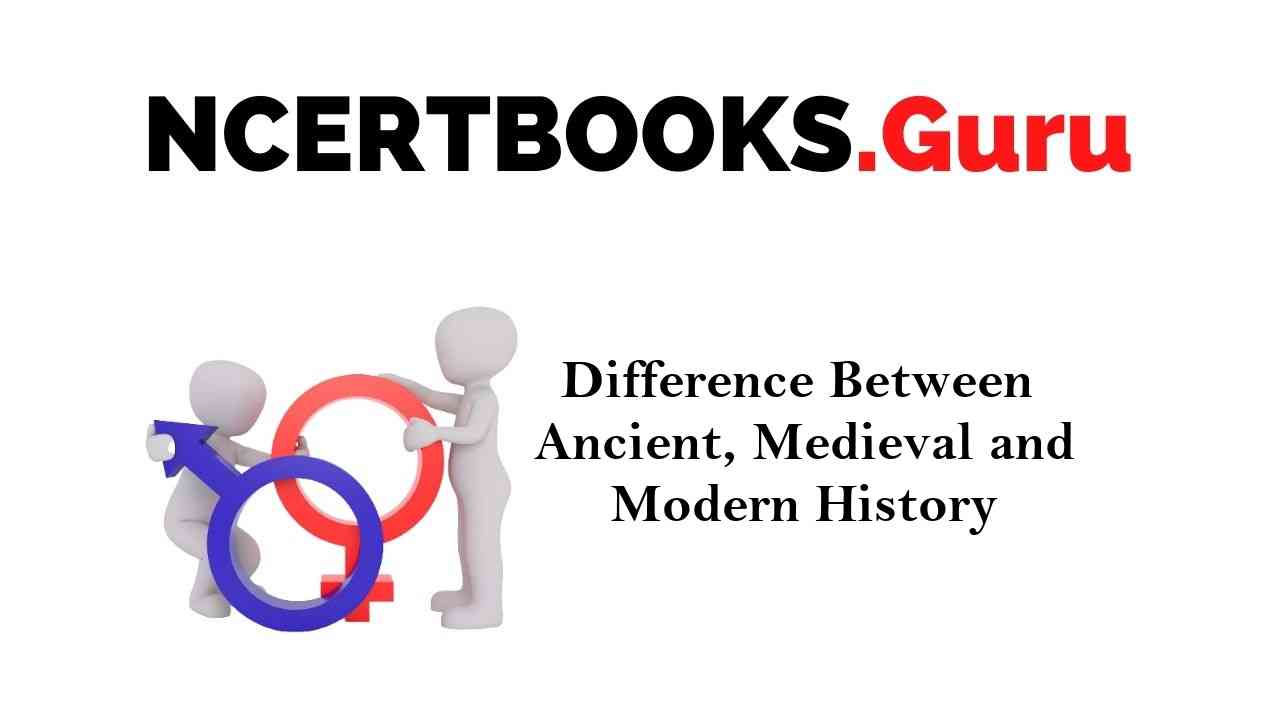Difference Between Ancient Medieval And Modern History of India: To determine the point of difference between different periods and understanding the culture, lifestyle and living conditions of a period, historians look at the archaeological structure and source texts. These provide valuable insight into the period. Certain archaeological structures of the past are still in place, making them heritage sites.
You can also find differences between articles on various topics that you need to know. Just tap on the quick link available and get to know the basic differences between them.
Read More: An Essay On Value Of Time
What is the Difference Between Ancient, Medieval and Modern History?
Ancient History
Ancient history talks about the records of the world from the beginning of time. It begins from the recording of human history to as far as post-classical theory. Ancient history spans over 5000 years from 3000BC to 500 AD (this time period is debatable among historians).
This period saw the rise of Greek kingdoms, the rise and fall of the Indus Valley civilization and the establishment of international trade routes. This era was marked by the use of bronze and iron to build human establishments that lead to the formation of large empires.
Medieval History
The medieval period commonly termed as the Middle Ages is the middle part of the three traditional periods of human history. It’s further subdivided into three regions, namely- Early, High and Late middle ages. It runs from the 5th century to the end of the 15th century.
This period was marked by technological advancements and agricultural innovations that led to the rise of trade. It also saw various famines, plagues, and wars, which diminished the population in the later period of middle age. The end of the middle ages marks the beginning of the early modern period.
Modern History
Modern history is the period after the 15th century to the present day. The early modern times is the period from the 15th to the 18th century. Towards the end of the 18th century, the Industrial revolution picked up the pace, and it marks a period of human evolution never seen before. This age brought the necessary information, reasoning and enlightenment.
Modern times is also the age of discovery. In modern times, Europeans started colonizing countries and trading with other countries and regions of the world. The 19th century saw the rise of the British empire, which controlled about one-fourth of the world population. The 20th century saw two World Wars- WWI and WWII. Many countries started decolonizing in this period.
Difference Between Ancient, Medieval and Modern History
The points of difference between Ancient, Medieval and Modern History Period are:
| Ancient History | Medieval History | Modern History |
| This period extends for a total of 5000 years from 3000BC to 500AD. | The period begins from the 5th century to the 15th century for a total of 10 centuries. | The modern age began from the 15th century and extends till the present day. |
| The population stood at 209 million at the end of Ancient History. | The world population rose from 210 million at the beginning of the middle age to around 461 million in the 15th century. | According to the most recent data, the population of the globe stands at 7.8 billion. |
| This period saw the establishment of international trade networks, the rise and fall of the Indus Valley civilization, and the Greek Kingdom’s rise. | The period was marked by the fall of the Roman empire. | The modern age is influenced by world wars, the rise of the British empire and decolonization. |
| Use of Iron and bronze tools became common. | It made way for technological and agricultural advancements. | This period saw the rise of disciplines, information and reasoning. |
| This period begins from the oldest recordings of human history. | The Middle age is divided into- Early, High and Late Middle ages. | It is divided into early modern times and modern times. |
